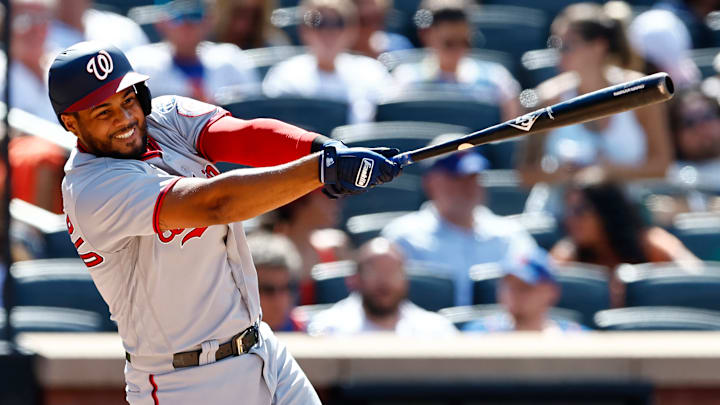5. The Chicago Cubs
I am trying not to be biased here, but every way I look at this deadline, I come to the conclusion that the Cubs came away with the best deal out of all the NL Central teams. They were able to bring back former farmhand Jeimer Candelario in a rental deal with the Washington Nationals. Candelario was arguably the best bat on the market this deadline and the Cubs were able to get him in a relatively good trade.
On paper, the Cubs did indeed give up two top 30 prospects in DJ Herz (no. 16) and Kevin Made (no. 14). However, those are two guys who will be blocked at the major league level due to the positions they play. Made is a middle infielder who would not be able to jump Dansby Swanson or Nico Hoerner in the depth chart while Herz is a starter who likely will become a reliever. The Cubs currently have three solid potential big-league starters in Triple-A in Jordan Wicks, Ben Brown, and Caleb Kilian with their best pitching prospect Cade Horton in Double-A. There are also a plethora of relievers coming up through the system so the depth is there to trade a guy like Herz.
Not to mention the fact that Herz and Made were eligible for the Rule 5 draft, meaning the Cubs could have lost them for nothing. Instead, the front office moved them for a solid bat who can play third and first base, both positions that the Cubs need a solid player. Since Trey Mancini was designated for assignment soon after Candelario's return, we will likely be seeing him a lot at first base.
The other big move made by Jed Hoyer and company was for former Kansas City Royals reliever Jose Cuas in exchange for outfielder Nelson Velasquez. While Cuas has been striking out 27% of the batters he's faced this year, he has a bloated ERA of 4.54 in 41.2 innings this year. He is also 29 years old so I don't really understand this trade but hopefully, the front office sees something good in Cuas that we can't.
All things considered, this was an excellent pick-up by the Cubs since Trey Mancini's bat has been abysmal this year. Candelario will be a great upgrade at first and the Cubs came away with the best bat on the market to help them push for the playoffs.
